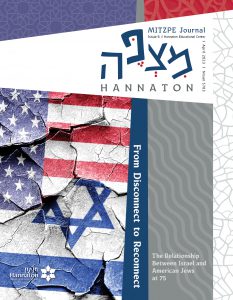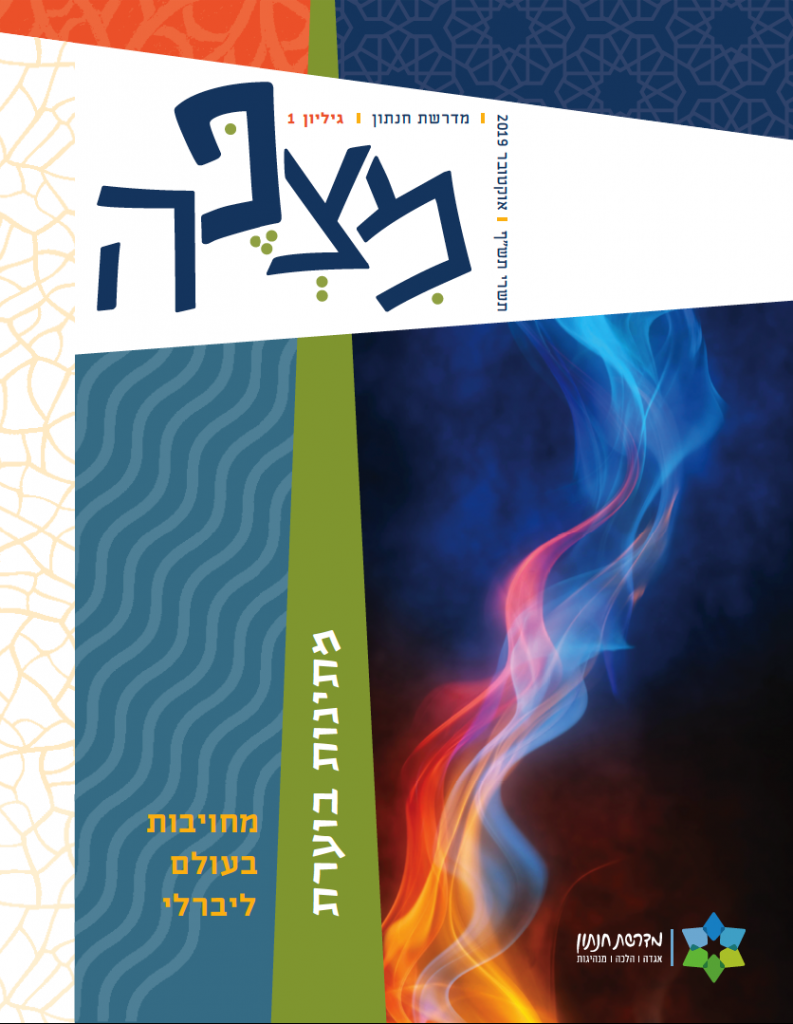I would like to begin by going back one hundred years, to the end of 1919 and the beginning of 1920. The world was in flux, the power relations among countries was at a turning point; the future would be different and unclear. The Middle East was in turmoil. A new order had arrived. Palestine was primed and curious. It was the end of an era. It was the beginning of an era. The determining elements began to take form and prepare for what was to come: The Third Aliyah (the postwar wave of immigration, 1919–1923) was at its height, although it was riddled with disappointment from the Jews’ response to the new reality. The beginnings of uprisings and violent resistance to the development of Zionist settlement in Eretz Israel began to appear. The British occupying forces were in transition from a temporary to a civil government that was supposed to implement British policy, which had issued both the Balfour Declaration and had promised a large Arab kingdom in Syria.
Now putting aside the broad political and strategic picture, I will focus on dozens of young people who reached the faraway Galilee, a beautiful, magical but also wild hinterland; they believed that within those large changes, there was a meaningful role for a person’s actions, for the way he or she chose to live.
Just a few dozen. Some went to Tel Hai, others to Kfar Giladi, some of them established a settlement called Hamara, and a few more went up to Metula—a more veteran settlement (moshava) that had been mostly abandoned because of the difficult situation in that region.
What were these young men and women looking for? They wanted a significant life, a life with meaning. They wanted a group they could belong to, a group that believed in a better world, in the possibility of improving and elevating humankind. They were Zionists and wanted to advance the future of the Jews, but there were other values they wanted to promote as well. They thought it was important and proper to be nationalists, but that wasn’t enough: They were socialists; they believed that the world could be more egalitarian and cooperative, with no class system. A number of them were pacifists who hated war. A few were vegetarian—Joseph Trumpeldor, for instance. They came to the Galilee impelled by the questions that occupied their thoughts as young men and women, searching for something worth living for. They wanted to live. That is the main point. They didn’t want to die. As those looking to live, they chose to name the courtyard that up until that point was called “Talha”—“Tel Hai”, the hill of life.
When they were drawn into the struggle between Arab and French forces over control of the area, they deliberated leaving or staying; most of them chose to stay even when the tensions grew, and with them the danger. One of the young men, Aharon Sher, went to visit Jaffa, and before he returned to the Galilee he wrote to his friends in the center of the country:
Despite the clear consensus that we are not leaving this place, because we will not give up on what is already built, there is an unrelenting feeling that we are just a handful, handful, handful [of people]. Because at the same rate that the number of people grows, their spirit strengthens as well. […] Don’t let the upper Galilee fall![1]
It seems like it wouldn’t be unfounded to assume that none of them really thought that a hundred years later there would be a conference in the Galilee, and that their names would be remembered. This is where Joseph Trumpeldor comes into the picture. Trumpeldor was not so young; he was nearing forty. After making aliyah for the second time, he chose to go up to the Galilee and assist the young men and women in defending themselves in the commotion that was developing between the French and Arab forces.
The Shooting Incident
So what caused these young men and women record two lines, or maybe more, in the history books? What makes a society remember a certain piece of its past while most pieces sink into oblivion—that is, are forgotten? The event that caused this was the shooting that took place at Tel Hai on March 1, 1920.
That was the day when things got complicated, seemingly for no reason. Kamal Hussein, the mukhtar (leader) of the village of al-Khalsa (today’s Kiryat Shemona) and of the surrounding area, arrived with a few of his men and dozens of Bedouins from the area. The Arabs were fighting the French, and their relations with the settlers of Tel Hai were actually quite good. But they wanted to search the grounds to see if any French police were hiding there.
Trumpeldor believed it was important to show the determination of the Jewish settlers. He gave an order that if anyone tried to take weapons from the guards, they were to open fire. When Kamal Hussein went up to the second floor to look for hidden French police and encountered a few guards, things got complicated. Hussein saw twenty-four-year-old Devorah Drechler holding a pistol. He wanted to assert his authority and demanded that she give him the gun, and he apparently also tried to take it from her by force.
Drechler yelled out to Trumpeldor, and he fired into the air, as a sign and signal that a battle was commencing. And a battle commenced. People shot at those who shot at them. People hid from those who hid from them. It must be said that this was a battle with no goal and no purpose. In between shots, Kamal Hussein yelled out that it was a misunderstanding and asked to go out and calm things down, but the sound of gunfire made this impossible. Only after a lot of gunfire and grenades being thrown was a cease-fire made possible for a moment, and the battle ended. Silence reigned, and the people of Tel Hai allowed the Arabs to clear their injured out of the courtyard.
Not even a day had passed before the young men and women gathered and decided to leave the settlement. They set fire to the structures and made their way toward the southern part of the country. The Shi’ite residents of south Lebanon and probably other Arabs from the area provided them assistance.
Myths are often created out of failure, as a result of wanting to turn a defeat into an uplifting story.
So it was an unnecessary battle. Six people from Tel Hai were killed. Two—a third of those killed—were women. Five were killed more or less immediately, while Joseph Trumpeldor was badly injured and passed away just a few hours later. Six—that was an unprecedented number in the history of the Yishuv. There were settlements that sought assistance from the center of the country, which never arrived and there were people who left the area because of fallen spirits that spread with the end of the battle—and maybe regretted not doing so earlier. (They returned to the area only seven months later.) Those six casualties died for no reason: the Arabs were not trying to conquer Tel Hai, despite their greater numbers and advantageous position on the neighboring hill, which allowed them to shoot into the courtyard. There were Arab casualties as well—between five and ten.
The Myth
So how is it that a hundred years later we still remember and talk about this small and historically insignificant event? This is where the concept of myth comes in—a heroic legend aimed at stirring people to identify with it and to be mobilized. The myth was and still is a significant tool used in religion, and nationalism—which in the past tried to fill the place of religion in people’s modern lives—adopted the myth and used it. So did Zionism.
The Yishuv (the Jewish community in Eretz Israel) and the Zionist movement created and nourished the Tel Hai myth, the legendary tale of Tel Hai, very quickly. It was like a lightning bolt that shot through the country’s skies. It is important that young men and women today, who are exposed to old and new myths, be aware of this; myths often are created out of failure, as a result of wanting to turn a defeat into an uplifting story. In the case of Tel Hai, maybe it was feelings of guilt from the leadership of the Yishuv in the center of the country, who were aware of the difficult situation in the Galilee and were not quick to act. Alongside pangs of conscience, another factor contributing to the myth was the feelings of shock and awe at the large number of casualties compared to the altercations that predated the Battle of Tel Hai.
Let me offer a reminder that we are talking about a historical moment filled with expectations and anxieties in the world and in the Middle East and Eretz Israel in particular. And so an event that looked like the first bloody battle after the World War—a clash between two nationalistic movements, Zionist and Arab—ended in a stinging Jewish failure. In light of the numerical balance of power—60,000 Jews versus 600,000 Arabs—the level of anxiety rose. Was the failure at Tel Hai a predictor of the inevitable failure of Zionism?
The myth sprang up with the aim of creating a reverse interpretation of the event and of reality, to turn a failure into a promise, defeat into victory. The texts that were written in the days following the event emphasized the courage and will of self-sacrifice, blurred the military failure, suppressed the retreat, and thus turned the Battle of Tel Hai into a heroic legend. Tel Hai provided Zionism with quite a few symbolic components essential to any nationalistic movement: a sacred place, a sacred date, new heroes, and, most important, a new reason to live and to die. Generations were taught the stories and songs of Tel Hai.
Nevertheless, when historians and scholars of collective memory consider the Tel Hai incident, many reach the conclusion that this event would have been forgotten and not carved into the Israeli collective memory if Joseph Trumpeldor, the most experienced fighter in the Zionist movement in those days, had not been among the six casualties. Great was the shock that followed the death of Trumpeldor, whose life symbolized the possibility that Jews could carry weapons and fight like the rest of the nations. Trumpeldor also provided the Yishuv with the saying that became the most identified with the Battle of Tel Hai: a moment before he died, he said to those with him some version of these words: “Don’t be concerned. It is worth dying for Eretz Israel.”
There are three credible witnesses who were close to Trumpeldor in his final moments and who quoted a sentence like that, or something close to it, immediately following the event. Therefore historians believe that he did in fact say that. Those who know Trumpeldor’s life story understand that he did not think that it is good to die. He believed with all his heart that it is good to live. When he said “It is worth dying for Eretz Israel,” he must have been recalling his serious injury during a war that happened sixteen years before, when he lost his arm in a blood-soaked war between Russia and Japan. Trumpeldor was a patriot in Russia as well, and just a few months after he was injured, he returned to the front lines to fight and was even taken as a prisoner of war. Therefore, the sentence “Don’t be concerned. It is worth dying for the land of Israel” can be understood as: If I am going to die in battle, which almost happened to me in Russia, then it is better that it happen in the country in which I chose to build my life.
Regardless, the lightning bolt that came with the quick dissemination of the myth of Tel Hai placed Trumpeldor at its center as a superhero—a settler imbued with belief in the Zionist vison, who in his life and death personified the readiness for patriotic sacrifice. The sentence “It is good to die for our country” caught on as a Zionist slogan and as a central motif in the new age in which the realization of the Zionist vision of a Jewish settlement in Israel came with casualties and blood.
This name, Tel Hai, was meant to sanctify life. Tel Hai—“the hill of life.”
Thus, for many years, the Tel Hai myth became the central myth of the Zionist movement. The young settlers of whom I spoke at the beginning—those who made aliyah to the Galilee in the years 1919–1920—came to live; they came to create, to establish communal settlements, to work the land. And here, in the center of the myth, this saying, “It is good to die for our country,” was erected as a slogan. It appeared in songs and stories and was read out loud with pathos at ceremonies that were held on the eleventh day of the Hebrew month of Adar. Members of youth groups who participated in the traditional pilgrimage to Tel Hai on that date saw that slogan etched in stone at the memorial site. Thousands of boys and girls in youth movements came on the anniversary of the Battle of Tel Hai from all over Israel; starting in the 1920s young boys and girls visited the courtyard in Tel Hai and the graves of the guards, and from 1934 they would visit the roaring lion statue, on which this saying is very noticeably carved.
This message, of course, is not unique to Israel nor to the Zionist movement; many other nationalistic movements hold this type of mindset. In fact, this message is ancient in human history, as you can learn from the words of the Roman poet, Horace, who uttered a sentence in Latin almost 2000 years ago – Dulce et decorum est pro patria mori – that means: “It is sweet and fitting to die for one's country.” Still, here, in our society, in those years, the saying “It is good to die for our country” was established as a slogan, and maybe even an exclamation that slowly became fate.
The Doubt
As is widely known, the process of fulfilling the Zionist vision was accompanied by battles and wars that pushed aside the event that took place on March 1, 1920. But the legacy of that battle, as it developed in the Zionist collective memory in those formative years, continued to accompany the Yishuv and the Zionist movement. “It is good to die for our country.” The Israeli culture adopted this motif—“It is good to die”—because there was no choice. Therefore, to this day, this sacrifice occupies a central and prominent place in Israeli consciousness, and those who die for their country—a person who dies while in uniform—are considered worthy of memorialization. And maybe this scale of self-sacrifice hinted or indicated that this was the ultimate or at least the most supreme way to act for society—to be killed in military service, no matter if the battle was necessary, no matter if the battle was unnecessary, and it almost doesn’t even matter what that person did in his or her life for himself or for society. The ticket into the pantheon of Israeli heroism is “It is good to die for our country.”
Nevertheless, as time moved on, the message that “it is good to die for our country” was held up to quite a bit of scrutiny. Pretty early on, there were those who faked a smile and didn’t believe that was what Trumpeldor had to say moments before he took his last breath. This skepticism grew and grew as Israeli society matured and discovered that the wars, the battles, and the death continue to accompany it and do not only remain as a memory of the early days of its establishment.
Gradually you could already hear different expressions of doubt about the validity of this saying of Trumpeldor’s and about the role it needs to play—or perhaps not play—in the Israeli ethos, and the warnings of the damage this message creates have become more and more common.
This feeling and perception that “good to die” hedges life in, and that maybe it is time to let this slogan go and replace it is conveyed in Yitzhak Rabin’s speech at the roaring lion statue, less than a year before he was killed:
If there is no choice […] you go out to battle, you go out toward loss of life too. But I say to you also: it is good to live for our country. The death and bereavement that surrounds us often are not a decree of fate, and they are not a heavenly decree. Things can be different. We can at least try to make things different.
Prime Minister Rabin was optimistic. He added:
This is the reason why these days we are trying, with no small measure of success, to attain peace…
And then he went back and changed the slogan:
It is good to live for our country—and we will spare no effort so that you and your siblings and friends will know no more war. We came to Tel Hai today to honor the fallen, to remember and to remind. If there is a need and no other way, we will fight a war. If it can be avoided, we will fight for peace.
Even those not yet born when Rabin visited Tel Hai and spoke those words know that he was murdered not long after that.
Since they were in preschool, the young people among us have been participating in ceremonies on the anniversary of Rabin’s assassination, which was added to the ceremonies we take part in on Yom Ha-Shoah, the Holocaust and Heroism Remembrance Day, and on Yom Ha-Zikaron (Memorial Day) for the Fallen Soldiers of the Wars of Israel and Victims of Terrorism.
But is it possible in this country to break free of the message, “It is good to die for our country,” when an entire culture of memorialization and bereavement surrounds those who were killed in the line of duty? Is there a real chance to open up to “It is good to live” when death is the key to memorialization and is what ensures being remembered forever?
I would like to conclude with those same young men and women I started with, the ones who searched for a life of meaning, a life of value. It was not by chance that they chose to give the hill on which they settled the name Tel Hai. This name, Tel Hai, was meant to sanctify life. Tel Hai—“the hill of life.”
A hundred years later, maybe it is time to take from the big myth of Tel Hai simply those two words: Tel Hai, the hill of life. Use them to ask: What is worth living for? How can young men and women build their lives in a way that makes it good to live? A hundred years after that day at Tel Hai, it is time to think about and emphasize “Tel Hai,” “the hill of life.” This pair of words can ring out the message to us all: that sanctity is in life.
[1].A. Sher, “La-mishmar,” Kuntresi 20 (18 Tevet 5680), 10–11.





